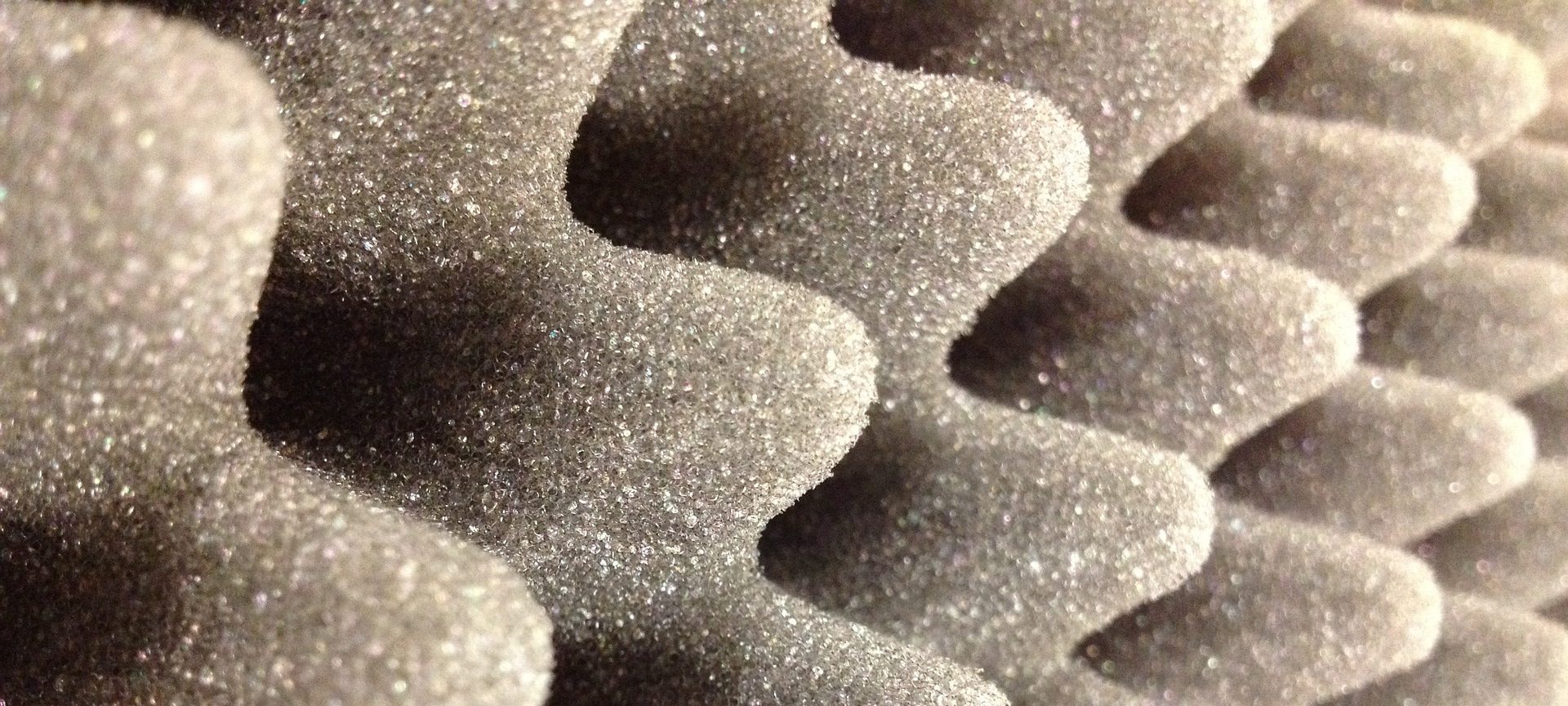
Autumn is officially over, and winter is here in Minnesota. Dazzling decorations can be seen on homes and storefronts, holiday tunes seem to be in constant rotation, and temps are dipping into the single digits and below. Those freezing temperatures and holiday songs got us thinking about two kinds of insulation: thermal and acoustical. What is the difference between the two and in what applications are they best used?
Thermal Insulation Explained
Thermal insulation is material that helps reduce the transfer of heat between objects. It keeps warm air from escaping rooms and vehicles, which makes it a great way to reduce energy costs in buildings, automobiles and airplanes. Insulation can work in several ways. Most commonly, thermal insulation uses materials consisting of tiny pockets of air. Because still air is such a good insulator, the trapped pockets of air in thermal insulation is what gives its high thermal resistance.
Though thermal insulation is an absolute “must” in the winter months, it’s also good for other uses, including:
- Protection Against Chemical and Physical Properties Causing Damage and Injury
- Help Keep Heat Away from Flammable Materials
At American Flexible Products, we use closed cell foams or urethane foams to limit the transfer of heat. Closed cell foams are manufactured with air bubbles, which are trapped inside the foam. This trapped air boosts insulation capability, creates a stronger and denser material, and helps with liquid water resistance.
We source our urethane foams from Rogers Corporation. Known as PORON®, this unique material is an open-cell microcellular urethane foam. These foams are critical for the development of protective gear, seals, sportswear, gaskets, vibration dampening, and more. Designers and engineers use urethane foams because it’s great for cushioning, padding, compressing, and sealing.
These foam insulations can be shaped to your unique specs and often include adhesives and laminates. Some of the most common applications of thermal insulation include:
- Electronic Assembly
- Medical Devices
- Aircraft/Spacecraft
- HVAC
- Recreational Vehicles
Acoustic Insulation Explained
Though acoustic insulation has thermal qualities, it’s fantastic for soundproofing needs because the insulation is so dense. Exorbitant or unwanted noise may cause headaches, distractions, or even hearing loss in very serious instances. Acoustical insulation helps reduce the transfer of noise that enters, leaves, or travels within a particular space or room.
When a room is properly soundproofed, the usually porous material, like foam or sponge, absorbs sound waves to reduce direct sound, reverberations, and echoes. For instance, businesses and facilities located near airports often incorporate acoustical insulation so workers aren’t constantly hearing planes flying above the building.
At  American Flexible Products, our engineers personalize and convert open cell foams to fit the shape and size you need, whether it’s for an airport or a large commercial-grade generator unit.
American Flexible Products, our engineers personalize and convert open cell foams to fit the shape and size you need, whether it’s for an airport or a large commercial-grade generator unit.
In an open cell foam setup, gas from within the material is released during formation, creating empty spaces. These empty spaces make for a lower density compared to closed cell materials. Open cell foam also has the capability to return to its original state after compression.
To make life easier on you, our team will help you choose the right properties for your needs, like the thickness, cell size, and density.
Some of the most common applications of acoustical insulation include:
- Machine Enclosures
- Warehouses
- Commercial Applications
- Industrial Applications
- Offices
- Schools
- Transportation
Do You Need Custom-Fabricated Thermal or Acoustical Insulation? We’re Here to Help!
American Flexible Products is a nation-wide converter of flexible materials—from foam to rubber to silicone and more. Every product is custom-cut and shaped to your design specs by our materials engineers.




